Introduction Why Yoga for Joint Pain
Joint pain affects millions of people worldwide. It can come from arthritis, injuries, overuse, or simply aging. Many people rely only on medicine, but yoga offers a natural way to find relief. Unlike heavy exercise, yoga is gentle, low-impact, and can be adapted for anyone. It not only strengthens muscles but also improves flexibility, calms the mind, and helps you move with less stiffness.
Understanding Joint Pain
3.1 What Causes Joint Pain
- Arthritis (osteoarthritis, rheumatoid arthritis, gout)
- Injuries (sprains, strains, fractures)
- Overuse from repetitive movements
- Sedentary lifestyle leading to stiffness
- Age-related wear and tear
3.2 Common Areas of Joint Pain
- Knees – most common, especially in arthritis
- Hips – often linked to stiffness and poor posture
- Back – due to weak core or spinal issues
- Shoulders – injuries or poor movement habits
- Wrists – typing, phone use, or carpal tunnel
3.3 When to See a Doctor
- Severe swelling or redness
- Sudden sharp pain
- Pain that doesn’t improve with rest
- Suspected fracture or dislocation
How Yoga Helps with Joint Pain
- Improves flexibility – gentle stretching makes joints less stiff.
- Strengthens muscles – stronger muscles protect joints.
- Increases circulation – blood flow brings healing nutrients.
- Encourages better posture – reduces uneven stress on joints.
- Calms the mind – less stress means less pain perception.
Precautions Before Starting Yoga
- Talk to your doctor first, especially if you have arthritis or injuries.
- Start with short, gentle sessions.
- Never push through sharp pain.
- Use props like blocks, straps, and pillows for safety.
Best Styles of Yoga for Joint Pain
- Hatha Yoga – slow, basic poses, good for beginners.
- Restorative Yoga – fully supported, deeply relaxing.
- Iyengar Yoga – focuses on alignment and props.
- Yin Yoga – long holds that release tension in joints.
- Chair Yoga – safe for seniors or those with limited mobility.
Warm Up Poses for Joints
- Gentle joint rotations – move wrists, ankles, and shoulders slowly.
- Seated cat-cow – relieves stiffness in spine.
- Ankle and wrist circles – improves blood flow.
Yoga Poses for Knee Pain
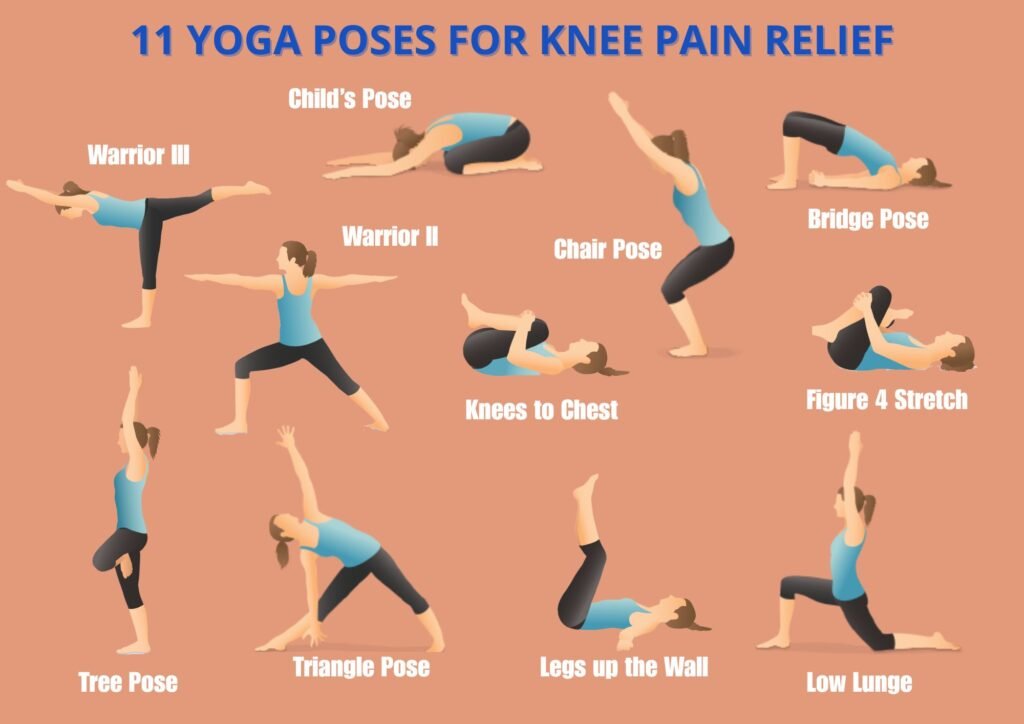
- Supported Bridge Pose – strengthens thighs and glutes.
- Mountain Pose – teaches alignment for less strain.
- Reclined Hand-to-Big-Toe Pose (with strap) – stretches legs gently.
- Supported Warrior Pose – builds strength without stress.
Yoga Poses for Hip Pain
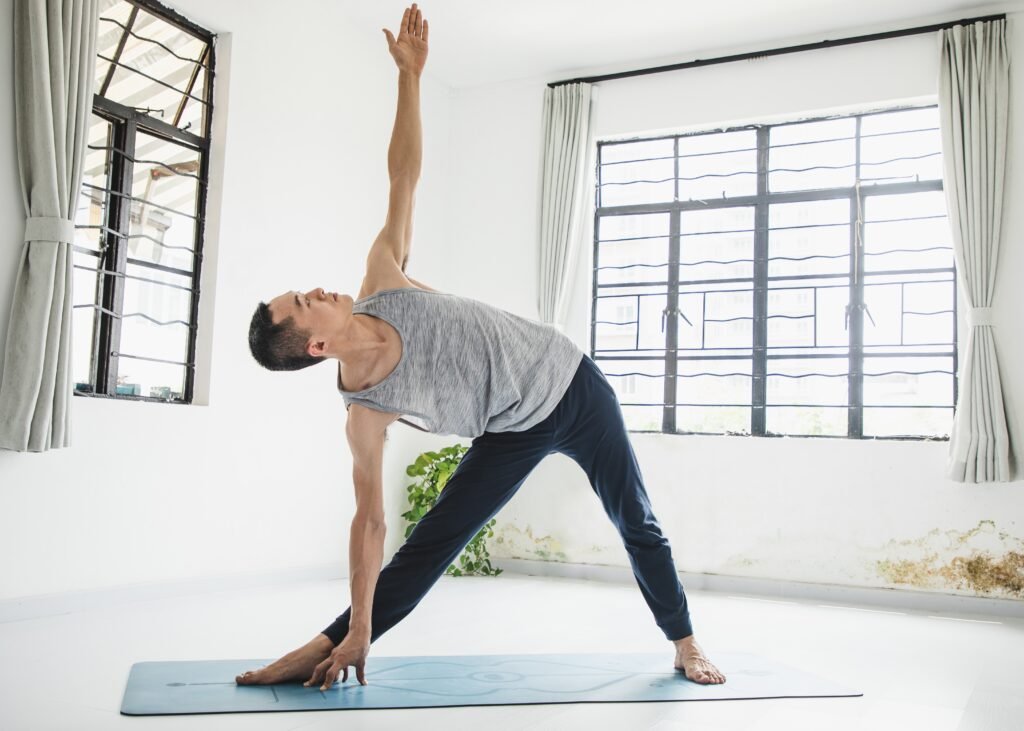
- Bound Angle Pose – opens hips.
- Reclined Pigeon (with pillow) – gentle hip opener.
- Happy Baby Pose – stretches lower back and hips.
- Supported Lunge Stretch – improves flexibility.
Yoga Poses for Back Pain
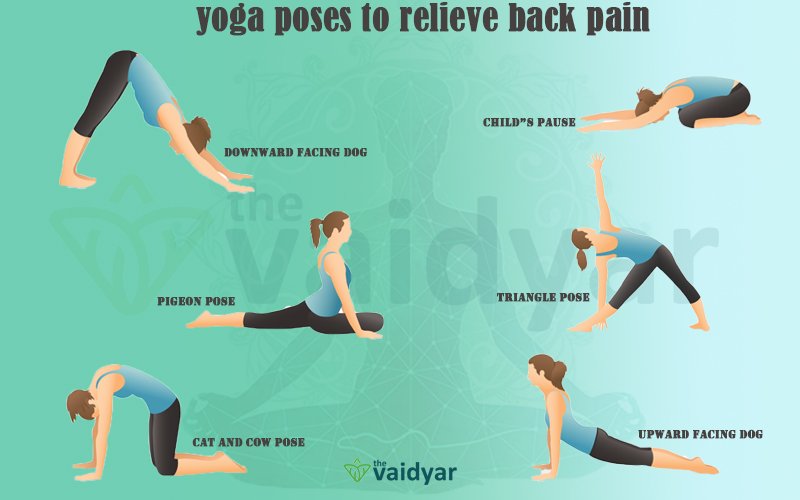
- Cat-Cow Stretch – warms up spine.
- Child’s Pose with Pillow – relaxes back.
- Sphinx Pose – strengthens lower back.
- Supine Twist – relieves stiffness.
Yoga Poses for Shoulder Pain
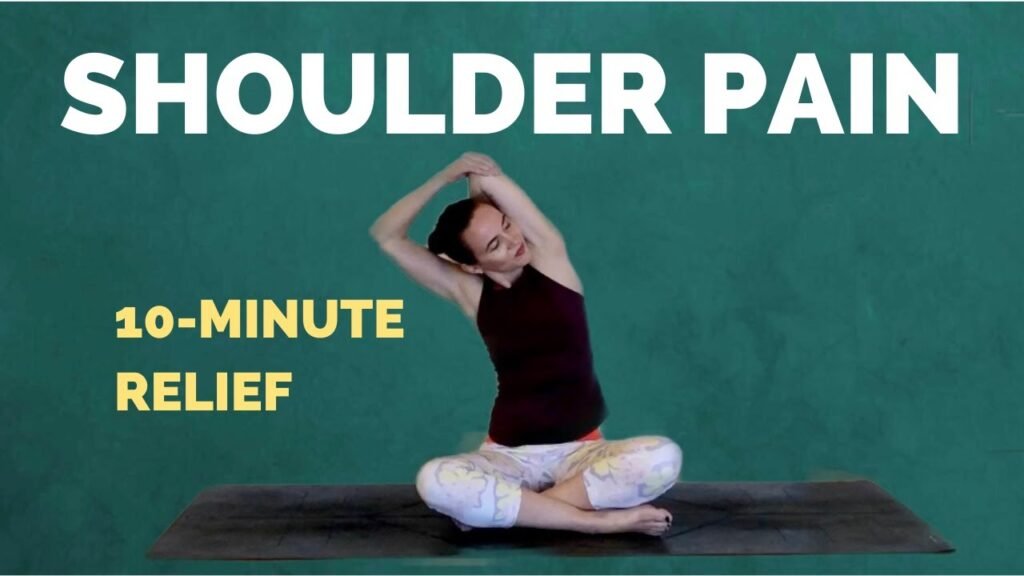
- Thread the Needle Pose – opens upper back.
- Supported Puppy Pose – stretches shoulders.
- Eagle Arms Stretch – releases tension.
- Wall-Assisted Opener – improves mobility.
Yoga Poses for Wrist Pain

- Wrist Stretches – gentle flex and extend.
- Tabletop on Fists – avoids pressure on wrists.
- Forearm Plank – builds strength without strain.
- Modified Downward Dog with Blocks – safer for wrists.
Breathing Practices
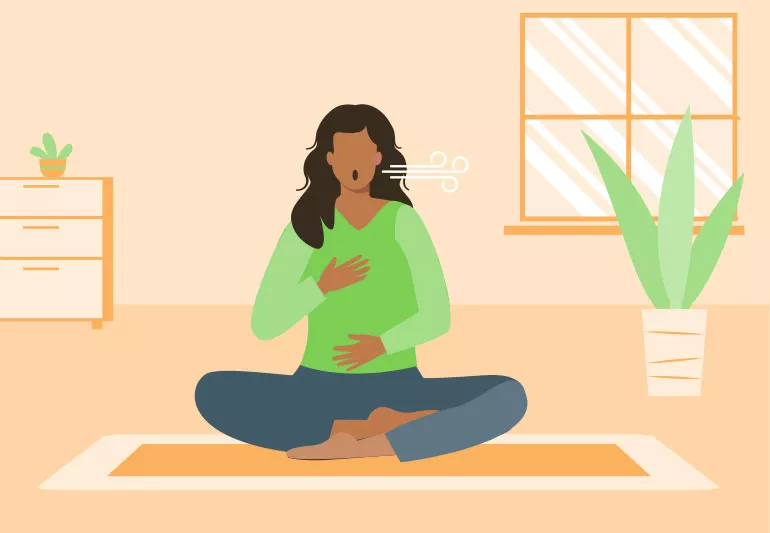
- Deep Belly Breathing – relaxes body.
- Alternate Nostril Breathing – balances mind and body.
- Ocean Breath (Ujjayi) – improves focus during poses.
Relaxation and Meditation

- Body Scan – notice and relax each joint.
- Yoga Nidra – deep guided rest.
- Mindfulness – staying present reduces pain.
Using Props and Modifications
- Blocks – bring the floor closer.
- Straps – help reach feet without strain.
- Bolsters/Pillows – provide support for resting poses.
Everyday Yoga Habits
- Morning: gentle stretches in bed.
- At work: desk yoga (neck rolls, seated twists).
- Evening: calming stretches before sleep.
Lifestyle Tips Beyond Yoga
- Eat anti-inflammatory foods (berries, leafy greens, fatty fish).
- Stay hydrated to keep joints lubricated.
- Sleep well for recovery.
Myths About Yoga and Joint Pain

- Myth: Yoga will damage joints.
Truth: Gentle yoga protects them. - Myth: You must be flexible first.
Truth: Flexibility comes with practice. - Myth: Only young people can do yoga.
Truth: Yoga is for all ages.
Sample Weekly Yoga Plan
- Day 1 – Gentle warm-up + knee poses
- Day 2 – Hip stretches + breathing
- Day 3 – Back poses + meditation
- Day 4 – Shoulder and wrist focus
- Day 5 – Restorative yoga
- Day 6 – Mix of all joints
- Day 7 – Rest and mindfulness
Common Mistakes to Avoid
- Overstretching joints.
- Holding breath during poses.
- Ignoring pain signals.
- Practicing without props.
Success Stories
- Anna, 55: “I had knee arthritis. After 6 months of yoga, I walk with less pain.”
- Ravi, 42: “Desk work gave me back pain. Daily cat-cow and twists fixed it.”
- Martha, 70: “Chair yoga keeps me moving even with arthritis.”
FAQs
Q: Can yoga replace medicine for joint pain?
A: No, but it can support your treatment and reduce dependence.
Q: How long before I feel results?
A: Many people notice less stiffness in 2–4 weeks.
Q: Can seniors do yoga for joint pain?
A: Yes, with chair yoga and props.
Table of Contents
- Introduction: Why Yoga for Joint Pain?
- Description
- Understanding Joint Pain
- 3.1 What causes joint pain
- 3.2 Common types of joint pain (knees, hips, back, shoulders, wrists)
- 3.3 When to see a doctor before doing yoga
- How Yoga Helps with Joint Pain
- 4.1 Improves flexibility
- 4.2 Strengthens muscles around joints
- 4.3 Reduces stiffness
- 4.4 Improves balance and posture
- 4.5 Supports mental health and stress relief
- Precautions Before Starting Yoga
- 5.1 Talk to your doctor first
- 5.2 Start slow and gentle
- 5.3 Listen to your body
- 5.4 Use props for support (blocks, straps, pillows)
- Best Styles of Yoga for Joint Pain
- 6.1 Hatha Yoga
- 6.2 Restorative Yoga
- 6.3 Iyengar Yoga
- 6.4 Yin Yoga
- 6.5 Chair Yoga
- Warm-Up Poses for Joints
- 7.1 Gentle joint rotations
- 7.2 Seated cat-cow
- 7.3 Ankle circles and wrist circles
- Yoga Poses for Knee Pain
- 8.1 Supported bridge pose
- 8.2 Mountain pose with alignment focus
- 8.3 Reclined hand-to-big-toe pose (with strap)
- 8.4 Supported warrior pose
- Yoga Poses for Hip Pain
- 9.1 Bound angle pose
- 9.2 Reclined pigeon pose (with pillow support)
- 9.3 Happy baby pose
- 9.4 Supported lunge stretch
- Yoga Poses for Back Pain
- 10.1 Cat-cow stretch
- 10.2 Child’s pose with pillow
- 10.3 Sphinx pose
- 10.4 Supine spinal twist
- Yoga Poses for Shoulder Pain
- 11.1 Thread the needle pose
- 11.2 Supported puppy pose
- 11.3 Eagle arms stretch
- 11.4 Wall-assisted shoulder opener
- Yoga Poses for Wrist Pain
- 12.1 Wrist stretches
- 12.2 Tabletop with fists instead of palms
- 12.3 Forearm plank
- 12.4 Modified downward dog with blocks
- Breathing Practices (Pranayama) for Joint Relief
- 13.1 Deep belly breathing
- 13.2 Alternate nostril breathing
- 13.3 Ocean breath (Ujjayi)
- Relaxation and Meditation for Joint Health
- 14.1 Guided body scan
- 14.2 Yoga nidra
- 14.3 Simple mindfulness practice
- Using Props and Modifications
- 15.1 How to use yoga blocks
- 15.2 How to use straps for limited flexibility
- 15.3 How to use bolsters and pillows
- Everyday Yoga Habits for Healthy Joints
- 16.1 Morning stretches
- 16.2 Desk yoga for workers
- 16.3 Bedtime yoga routine
- Lifestyle Tips Beyond Yoga
- 17.1 Nutrition for healthy joints
- 17.2 Hydration and joint lubrication
- 17.3 Importance of sleep and rest
- Myths About Yoga and Joint Pain
- 18.1 “Yoga will hurt my joints”
- 18.2 “You have to be flexible to start yoga”
- 18.3 “Only young people can do yoga”
- Sample Weekly Yoga Plan for Joint Pain
- Common Mistakes to Avoid
- Success Stories and Real-Life Examples
- FAQs
- Conclusion
Conclusion
Yoga is a safe, natural way to ease joint pain and regain movement. With gentle poses, mindful breathing, and daily practice, you can reduce stiffness, build strength, and feel more at ease in your body. The key is consistency, patience, and kindness toward yourself.
